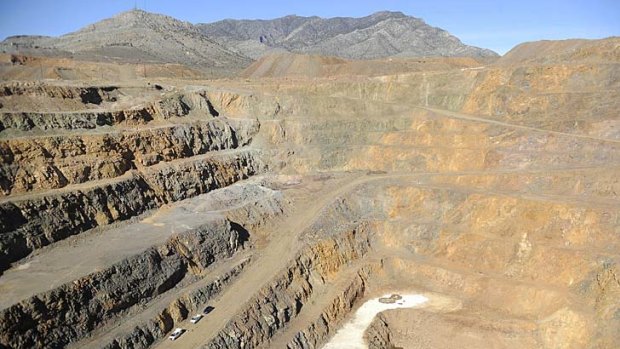By Philip Wen
ANGRY shareholders will move for a court injunction and launch a counterbid if Lynas does not call off the contentious sale of a rich rare earths and metals deposit to a related party.
Bob Watson, the chairman of the online recruitment site Seek, has joined Mark Suhr, a Melbourne businessman and fellow Lynas shareholder, to fight the proposed $20.7 million sale of the rare earth miner's Crown polymetallic deposit to Forge Resources.

Demand for rare earth metals is soaringCredit: PBottrell@smh.com.au
The executive chairman of Lynas, Nicholas Curtis, is a 15 per cent shareholder of Forge and stands to vest 24 million performance shares if the deal proceeds, boosting his stake in Forge to close to 40 per cent.
A 2007 Lynas investor presentation boasted of the Crown ore body's ''over $50 billion metal content'' and ''positive project value''. Lynas had continued to promote the deposit to investors until last year, before deciding the asset was ''non-core'' and would be sold.
Mr Suhr said the deal was not in the best interests of Lynas shareholders, and that the miner should hold on to the asset and develop it itself. He said he was concerned ordinary shareholders would mistakenly consider the Lynas deal to be trivial given it was worth little compared with its market capitalisation of more than $4 billion.
''We don't understand why this asset has been labelled non-core when it's a significant asset in itself,'' Mr Suhr told BusinessDay yesterday. ''Why do they need to sell it off at this point? What's the rush?''
Mr Curtis and an independent Lynas board member, Liam Forde, did not return BusinessDay's requests for comment yesterday.
Lynas has said its priority lies with creating a ''fully integrated source of rare earth from mine through to market'' and regards the Crown deposit as a non-core asset as it does ''not fit within Lynas's strategic vision or strategy'' given its lower rare earth content and higher rare metals content, including tantalum and niobium ore. Tantalum is used in circuit boards and niobium is used as an alloying agent to produce stronger and lighter steel.
An analyst at BBY, Mike Harrowell, said this made it ''arguably surplus to Lynas's main business'' and that Lynas retained first option on any rare earths produced in Crown. But he said shareholders also had a ''legitimate concern that there has not been a contested determination of the asset's price''.
Lynas stopped referring to the $50 billion ''in-ground'' value after the Australian Securities Exchange issued a directive to mining companies in December 2007 that ruled the reporting of such values ''to have little to no relationship to economic viability, value or potential returns to investors and may therefore be misleading''.
Mr Harrowell said: ''The $50 billion referred to is likely to be the revenue value of the ore in the ground at current prices, that is, before capital and extraction costs, metallurgical losses, and before allowing for discounting for the long period over which any cash flow would be generated.''